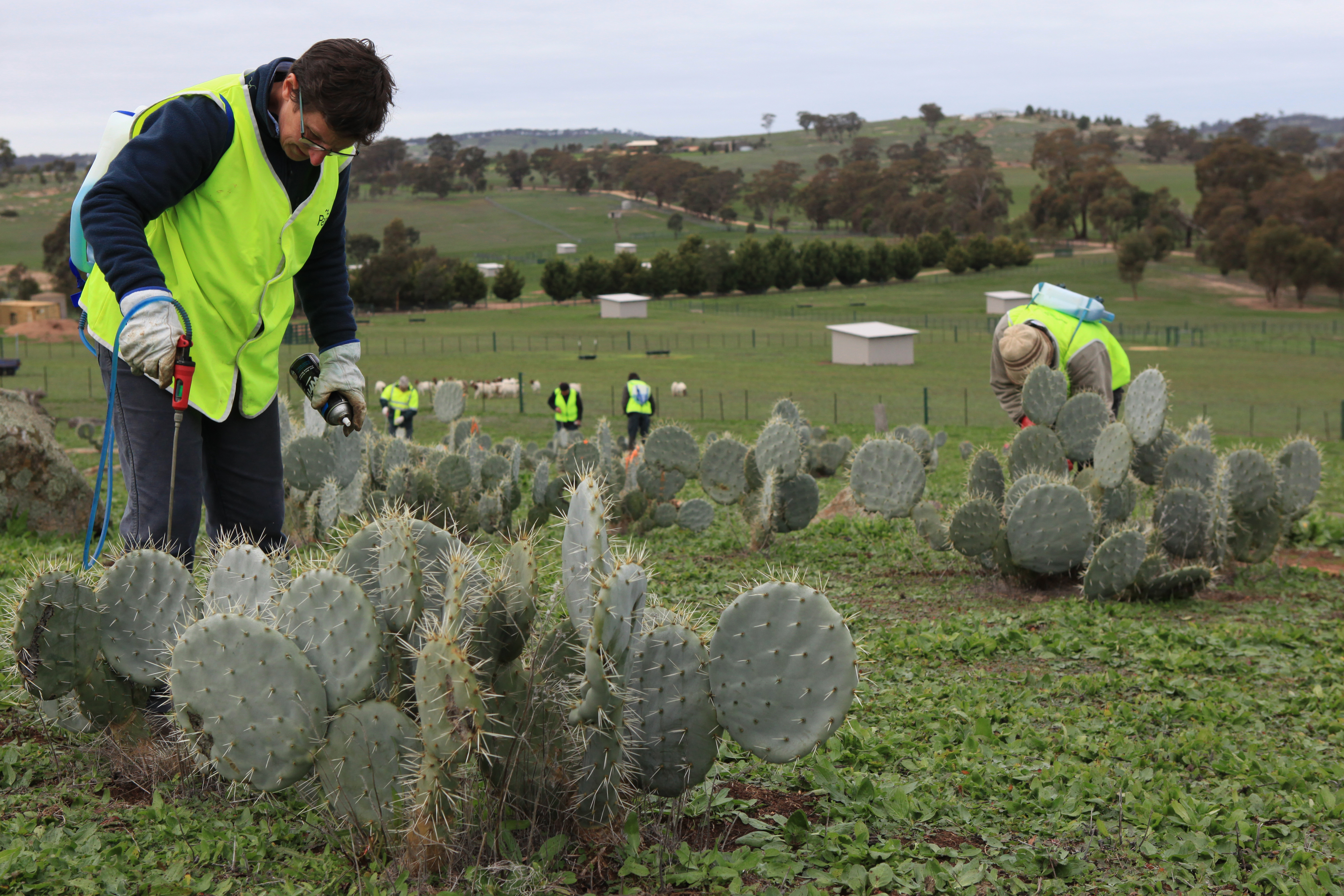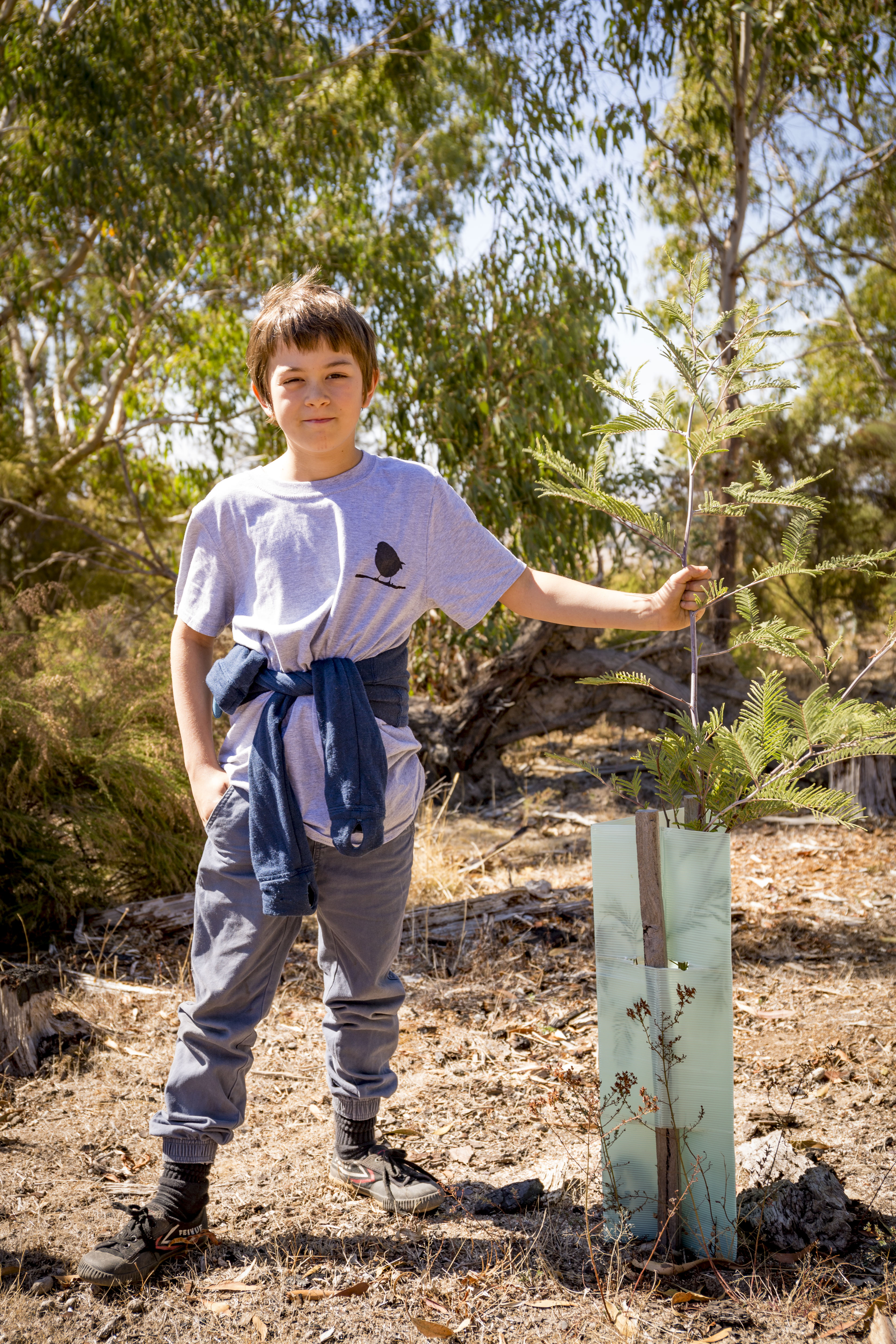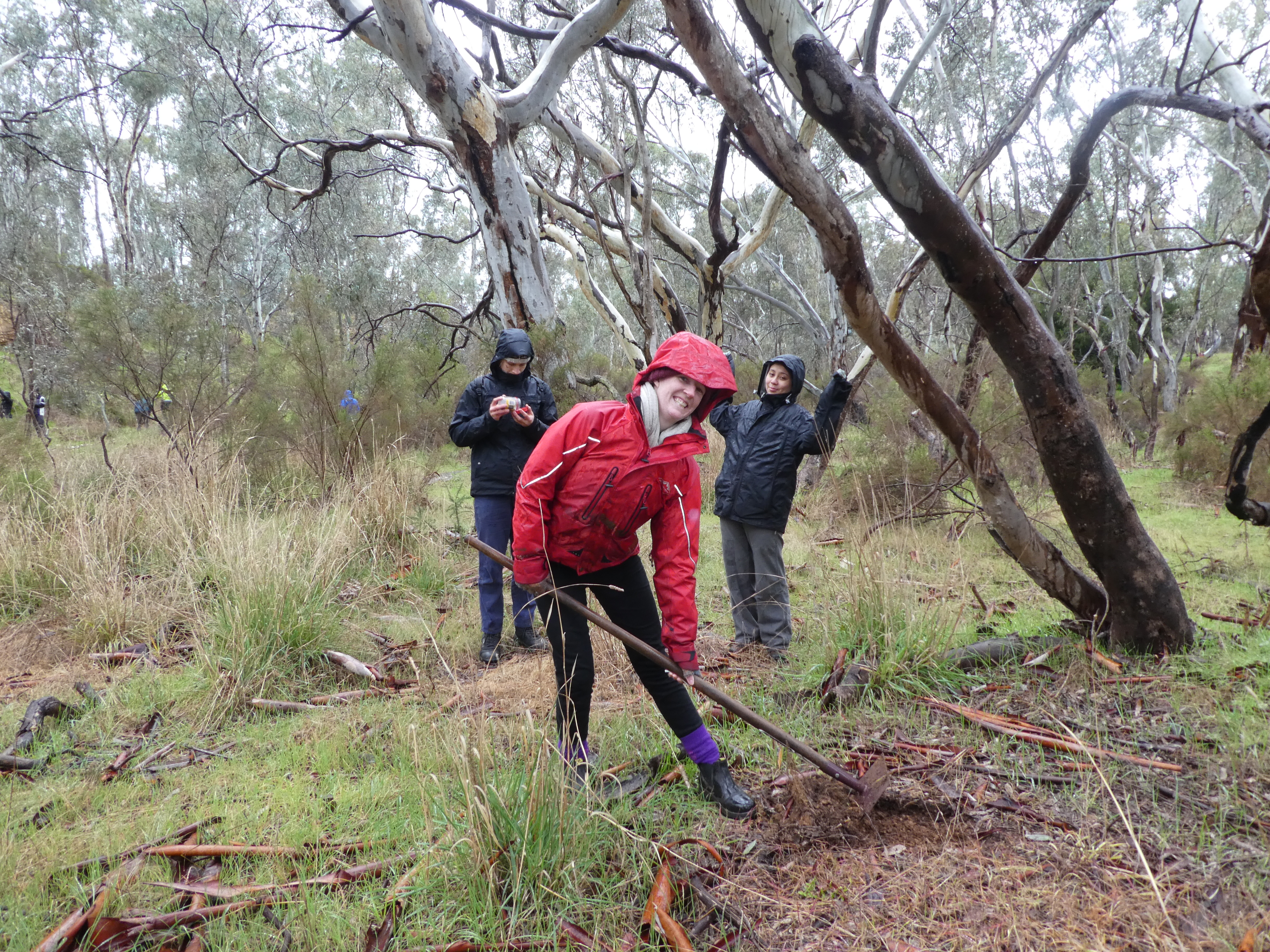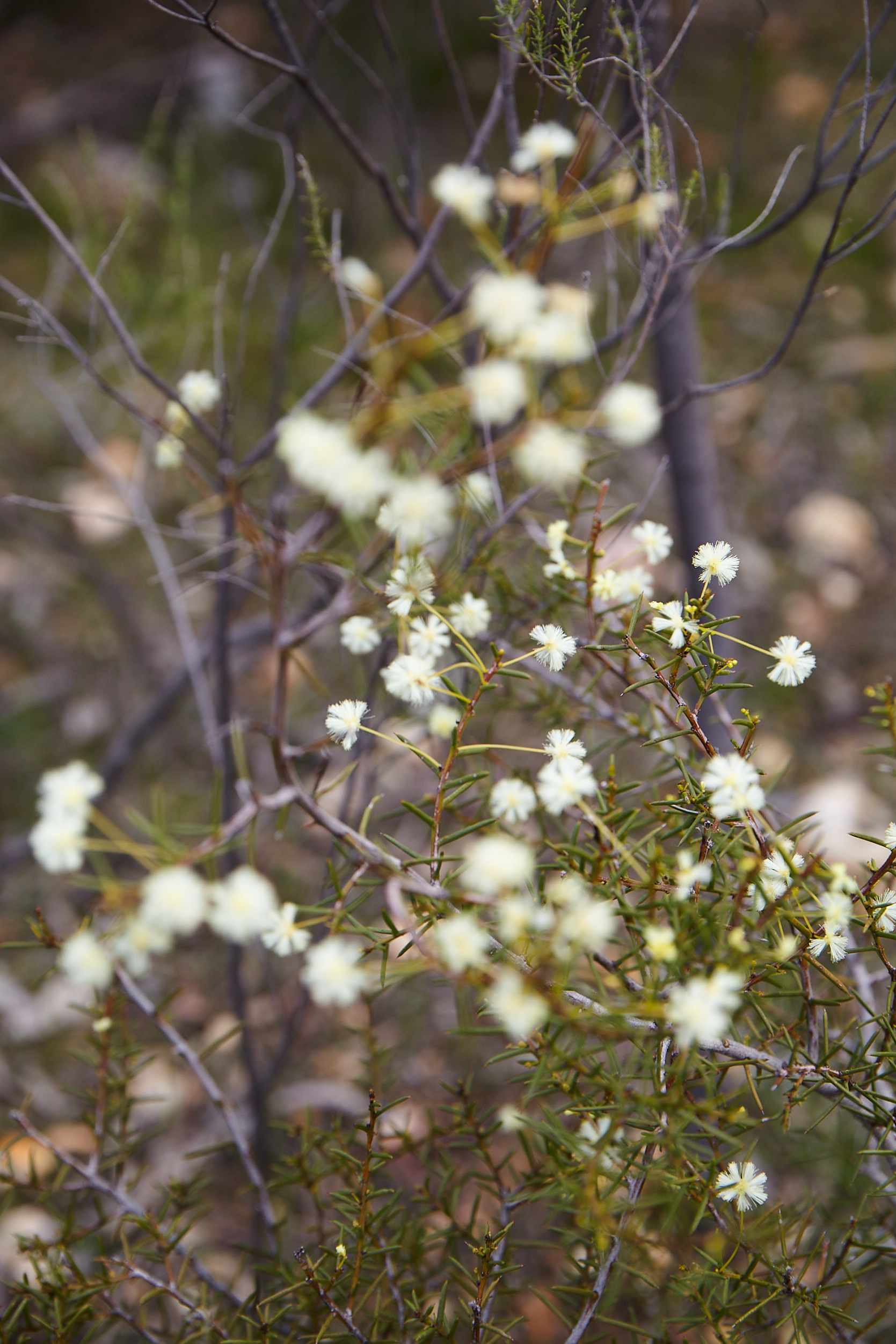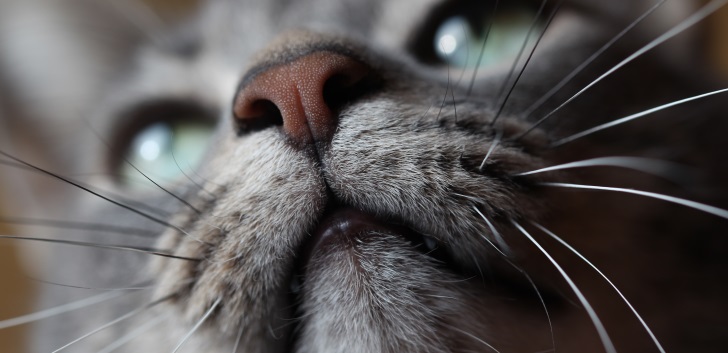Birdlife Castlemaine District celebrates its first birthday
Posted on 26 September, 2019 by Ivan

Sue, Jane, and Phil celebrate Birdlife Castlemaine District’s first birthday at a bird walk in July (photo: Birdlife Castlemaine District)
Connecting Country work with Birdlife Castlemaine District on many projects and share a common love for our regions birds and biodiversity. It was a significant effort and milestone for Castlemaine to have its own Birdlife branch, highlighting the community support and passion for our nature hotspots and wildlife. The newest branch of BirdLife Australia was officially launched at the Castlemaine Botanic Garden’s Tea rooms in July 2018, meaning they recently celebrated their first birthday! A belated ‘Happy Birthday’ and congratulations on a fabulous first year to Birdlife Castlemaine District.
How you can be involved with Birdlife Castlemaine District:
‘Like’ their Facebook page: CLICK HERE
Email castlemaine@birdlife.org.au if you would like to be added to their eNews list.
Become a member of BirdLife Castlemaine District by joining their parent, BirdLife Australia: CLICK HERE
Looking after parks across Victoria – your chance to help!
Posted on 26 September, 2019 by Asha
Parks Victoria are developing a state-wide Land Management Strategy to guide and inform future planning and decision-making across the parks estate. The Strategy is intended to respond to key challenges – including climate change, population growth, changing community needs, increased visitation, invasive pest species, accessibility requirements and more.
Parks Victoria are now inviting communities and stakeholders to provide their feedback on the draft Aspiration and Guiding Principles that will form the basis of the Land Management Strategy.
You can provide feedback online at www.engage.vic.gov.au/lms until midnight Sunday 29 September 2019. Parks Victoria have also prepared an Engagement Park document (click here to download), to support groups promote the engagement and hold conversations.
If you have further questions, you can contact parkstrategymailbox@parks.vic.gov.au
The Victorian National Parks Association (VNPA) have also offered support and advice through their website: CLICK HERE.
Walking together towards Reconciliation: Weather knowledge of the KULIN Nations
Posted on 17 September, 2019 by Ivan
In some regions the Kulin Nations observed and named seven seasons of varying length in a year; each season happens when certain stages are reached in the natural world. The local Dja Dja Wurrung clans of the Kulin Nation, however, divided the year into six seasons.
The name Poorneet, meaning tadpoles, is given to the time in September and October when temperatures are rising, although there is still plenty of rain. Tadpoles are found in the water holes, and Pied Currawongs are louder and cheekier than ever. Days and nights are of equal length.
Plants like the Murnong (Yam Daisy) are flowering, so it’s time to dig for the yam tubers. Murnong, once abundant all over Victoria, rapidly became scarce after colonists brought what were soon vast numbers of sheep into the region.
Yams may make a comeback as a food source, since Aboriginal communities in East Gippsland and the NSW south coast have begun experimenting with yam cultivation. In his book Dark Emu, Bruce Pascoe tells how the very first records of European explorers and pioneers give evidence that Aboriginal people were farming the land. But to the newcomers, for whom the crops and agricultural methods were totally different from the familiar ones of home, they meant very little. All too soon, grain stores, tilled land, eel traps, houses and wells returned to the soil from which they had come.
Many thanks to Nalderun for this article. Nalderun is a service that supports the Aboriginal Community, led by Aboriginal people. Many people and organisations in the Mount Alexander Shire contribute to Nalderun; the name is a Dja Dja Wurrung word meaning ‘all together’. More information can be found at www.nalderun.net.au
Spring railway walk with Nuggetty Land Protection Group – 22 September 2019
Posted on 11 September, 2019 by Jess
Nuggetty Land Protection Group is planning a walk along the Nuggetty to Shelbourne Railway line. This was a branch line from Maldon through Nuggetty and Bradford and ends at the Shelbourne Station complex. The old railway line traverses farmland and Bradford Nature Conservation Reserve. The line was closed in 1960 after due to major fire damage. There will be a stop for lunch at the reserve to look at local birds, orchids and other flora. Binoculars, tea, coffee and water will be available.
Spring railway walk
When: Sunday 22 September 2019 from 9:30 am
Where: Park at Nuggetty Peace Monument, Nuggetty School Rd, Nuggetty VIC (turn right off Shelbourne Rd north of Maldon). A community bus will transport walkers to start of walk.
Bookings preferred: Jane Mitchell (0457 729 132) or Christine Fitzgerald (0419 347 408)
The walk is approximately 13 km. Bus will meet at intersections of roads if lift required and return you to your car or take you to next section of the walk. Please bring own lunch and water, and wear walking shoes, weather appropriate clothing and hats. The event will be cancelled if weather inclement. Please leave pets at home.
Landcare Week 2019 is next week!
Posted on 29 August, 2019 by Asha
Ready to get outside and enjoy the sunshine? Want to make a difference and help our local environment? CLICK HERE to see some of the Landcare events happening over the next month. Anyone is welcome to come along to these to give Landcare a try and ask questions.
Connecting Country and the Landcare Steering Group are also running four stalls for Landcare Week from 1 to 8 September 2019. We’ll be at Castlemaine Farmers Market, Castlemaine Maxi IGA, Wesley Hill Market and Maldon Market, so please come by for chat and pick up some free brochures!
Wattle walk and talk well received
Posted on 29 August, 2019 by Ivan
The wattles were blooming like crazy for the strong crowd of nearly 50 people at our ‘Wonderful World of Wattles’ event on Saturday 24 August at Campbells Creek in central Victoria. It was a day to remember, with sunny weather and two excellent guest speakers to educate participants about the beauty, benefits and biodiversity of the Acacia (wattle) species in our region. Connecting Country, Friends of Campbells Creek Landcare and Friends of the Box-Ironbark Forests partnered to deliver the event, which was part of our larger ‘Prickly plants for wildlife’ project funded through the North Central Catchment Management Authority.
The event kicked off indoors with retired academic and botanist Rod Orr, who has spent many years volunteering at the Bendigo Field Naturalists Club. Rod provided an excellent overview on the ecology and biological function of wattles. The audience was fascinated to learn that wattles can produce their own nitrogen fertiliser through nodules in their roots, allowing them to live in extremely low-nutrient soils. This explains why they are so useful in colonizing disturbed sites and degraded landscapes, like central Victoria!
The second part of the educational event was a walk and talk with Campbells Creek identity Ian Higgins, through the Campbells Creek Reserve at the end of Honeycomb Road. This site proved perfect for the keen audience to test their skills in identifying the large array of Acacia species that had been re-established at the site. Ian pointed out some of the finer skills in how to differentiate between species. He also gave the group a lesson in growing Acacias from seeds, and managed to get the audience to complete some direct seeding in a site dominated by Phalaris grass!
For those who could not attend, Friends of the Box-Ironbark Forests have developed an excellent 112 page book for sale, suited to beginners. In plain language, and generously illustrated, it presents 21 Acacia species that flourish in the Mount Alexander region of central Victoria. A general introduction explains different features of wattles, helping in identification and appreciation of these tenacious and beautiful plants.
Many thanks to Gen Kay, who generously volunteered her photography skills to capture the following images on the day.
Come to our Acacia workshop – or get your SGM proxy form now!
Posted on 15 August, 2019 by Ivan
Connecting Country is holding a Special General Meeting and Acacia workshop, The Wonderful World of Wattles, at 2.00 pm on Saturday 24 August 2019 at Campbells Creek Community Centre. Come along for brief meeting formalities and then learn all about identifying our amazing local Acacias with special guest and local legend, Ian Higgins and Rod Orr!
We would like to remind members of Connecting Country to please fill out a Proxy Form if you cannot attend the special general meeting. This will help us obtain sufficient member numbers to conduct the formalities of the special meeting and fulfill our legal obligations in changing auditors.
To see our official notice and fill out the attached proxy form for the meeting – click here
Please return your completed proxy form by email to info@connectingcountry.org.au or or post to the Connecting Country office.
For more information on the interactive Acacia workshop, please see our flyer below. To download a copy of the flyer – click here
To RSVP please visit TryBooking – click here
This Acacia workshop is made possible by generous funding support from the North Central Catchment Management Authority and our wonderful volunteers Ian Higgins and Rod Orr.
Video on Communities Listening for Nature Castlemaine
Posted on 14 August, 2019 by Ivan
Fresh off the press! We have received Museum Victoria’s published video summary of the fascinating ‘Listening to Nature Citizen Science Video’, which has been mapping out the sounds of our local bushland. Scientific wildlife surveys are essential for reporting and managing biodiversity, and researchers now listen as well as look.
During 2018, a group of volunteers began a project to monitor nocturnal birds in the Mount Alexander region of central Victoria using song meter recorders. This ‘Communities Listening for Nature’ project was run by Victoria National Parks Association (VNPA) in partnership with Museums Victoria and Connecting Country.
The Communities Listening to Nature project uses automated sound recorders to monitor birds in their natural environments. The song meters recorded bird calls at many sites over long time periods. Partnering with local groups, the VNPA installed recorders at several locations, including Mount Worth State Park and surrounding district, Bunyip State Park, Mount Alexander region and the Wombat State Forest.
Each location has its own study design, which has been developed with input from local groups and land managers, and scientists from Museums Victoria. The recorded nature calls will help them learn more about Victoria’s nature. The recordings are also added to the public library of Victorian bird sounds managed by Museums Victoria and available to everyone from their online collections. Communities The project was supported with funding from the Helen Macpherson Smith Trust.
For more information on the Listening to Nature Program, please click here.
The video contains interviews with the volunteers and participants of the project and gives a great summary of why the project is vital to our future work. The Listening to Nature project uses spectrograms, a visual representation of an audio signal, with the pitch or frequency displayed vertically, and the time horizontally. High frequencies (like those made by bats) are near the top of the image, while lower frequencies are near the bottom of the image. To learn more about some of the wildlife sounds recorded during the project in our region, please click here.
The filmmakers acknowledge the elders of the Dja Dja Wurrung community and their forebears as the traditional owners of Country in this region.
Where have all the Greater Gliders Gone? – 31 August 2019
Posted on 13 August, 2019 by Jess
Join the Upper Campaspe Landcare Network and Macedon Ranges Shire Council for a discussion about the threatened Greater Glider with mammal experts Peter Menkhorst and Jemma Cripps. Hear about the findings of a recent citizen science project to search for Greater Gliders, Brush-tailed Phascogales and Powerful Owls in the local region. An interactive session with audience participation will follow. Afternoon tea is included.
When: 3.00 to 4.30 pm on Saturday 31 August 2019
Where: Newham Mechanics Institute, 1292 Rochford Road, Newham VIC 3442
To book: Bookings required – click here
For more information: Contact Robin (Landcare) on 0438 271 108
Safe Cat, Safe Wildlife
Posted on 8 August, 2019 by Jacqui
To celebrate International Cat Day, held on 8 August each year, and the unique wildlife of the Mount Alexander region, we are pleased to share a initiative called Safe Cat, Safe Wildlife from Melbourne Zoo and the RSPCA.
As the name suggests, Safe Cat, Safe Wildlife raises awareness of the threats to cats and wildlife when cats are able to roam freely. It aims to to build a community of cat owners who have the tools to provide their cat with the longest and happiest lives possible by keeping them safe and enriched at home. It helps cat owners with all aspects of cat care through an informative blog with hacks designed to keep cats entertained, healthy and happy indoors.
You can find out more and sign up to receive their newsletter on the Safe Cat, Safe Wildlife website – click here.
Birdlife and Wildlife Victoria are official campaign collaborators, and many local councils, veterinary clinics and wildlife networks have jumped on board to support the campaign. We note our local Castlemaine Veterinary Clinic has signed up as a supporter. To see the full list of supporters click here, scrolling to the bottom of the page.
At Connecting Country’s recent community bird monitoring workshop, participants identified the impact of cats on local birds as a priority for the community. Some local Landcare groups have also been working on managing issues of cats and local wildlife.
Tim Low on ‘The New Nature’ – 6 September 2019
Posted on 8 August, 2019 by Frances
Connecting Country and Newstead Landcare Group are delighted to host a presentation by well-known author and biological scientist Tim Low.
Tim will speak on his book ‘The New Nature’. Although controversial when first published in 2002, the book was recently updated and its themes are now more relevant than ever. Following Tim’s presentation there will be an opportunity for questions and answers, then a cuppa and cake.
Tim Low talk on ‘The New Nature’
When: 7.30 pm on Friday 6 September 2019
Where: Newstead Community Centre, Lyons St (Pyrenees Hwy) Newstead, VIC
All welcome. A gold coin donation will help us cover costs. Bookings not required.
For our event flyer – click here
This event is supported by funding from North Central Catchment Management Authority and Friends of the Box-Ironbark Forests.
 Tim Low
Tim Low
Tim Low is a biologist and best-selling author of seven books about nature and conservation. ‘Where Song Began’ won several prizes, including the Australian Book Industry Award for best general non-fiction. It was praised in the New York Review of Books and recommended by Scientific American. ‘The New Nature’ was praised by Time magazine and listed by Who magazine as one of the books of the year. ‘Feral Future’ inspired the formation of a conservation group, the Invasive Species Council. Tim’s articles have appeared in Australian Geographic, The Weekend Australian Magazine, The Guardian and many other places. He works partly as an environmental consultant, and has a lizard named after him. He recently returned from a visit to Manchuria as a guest of the China Writer’s Association.
‘The New Nature’
The conservation movement talks about declining species, as it should, but this leaves many people unaware that some animals and plants are doing better today than ever before, because they have found ways to exploit us. Australia has winners as well as losers. Animals don’t have any concept of ‘natural’ or ‘unnatural’ so they don’t automatically recoil from cities and farms. Sometimes they can do better in cities than in forests – Australian cities and towns are gaining animals over time. Melbourne, Sydney and Brisbane now have peregrine falcons nesting on skyscrapers. Some urbanising species, notably corellas and flying foxes, are becoming sources of conflicts that need to be carefully considered. The notion of wilderness can get in the way of understanding all this because it implies that nature is authentic only when there is no human influence. But animals and plants have been benefiting from humans ever since Aboriginal people began burning the ‘wilderness’ to manage it.
You can read more about Tim Low and view his Blog and website – click here
Natural Newstead: A proper soaking and then woodland birds
Posted on 31 July, 2019 by Asha
If you love birds and our natural heritage, hopefully you’ve already discovered the Natural Newstead blog. The blog is a wealth of knowledge and expert observations of flora, fauna and landscape in central Victoria. With nearly 2,000 subscribers, it contains some of the best nature photography you will see anywhere. It is run by Newstead resident and local ecological identity Geoff Park, with contributions from other knowledgeable locals. Geoff Park has worked in various roles with the North Central Catchment Management Authority and in the private sector, and is very passionate about biodiversity conservation and on-ground biodiversity outcomes.
If you’re not familiar the blog, check it out here: https://geoffpark.wordpress.com
We particularly enjoyed Geoff’s recent post about woodland birds enjoying the wetter conditions this winter. To read this post on the Natural Newstead website, click here, or continue reading below.
A proper soaking and then woodland birds
Posted on 1 July 2019 by Geoff Park
We’re in the depths of winter and celebrating wonderful rainfall over the weekend.
Hopefully we move slowly now into a ‘typical’ spring that enables some recovery of woodland bird populations across the region. I was pretty chuffed to see some familiar faces at Muckleford Gorge, especially a pair of Hooded Robins. Along with the Crested Shrike-tit and Jacky Winter we encountered numerous Flame Robins, a Golden Whistler, Restless Flycatchers and Brown Treecreepers.
A prickly reminder to watch the Wheel Cactus
Posted on 18 July, 2019 by Ivan
What is Wheel Cactus (Opuntia robusta)? A plant native to Mexico, this cactus is most commonly called Wheel Cactus in Australia, and believed to be introduced into our country as a ‘hardy’ garden plant. This cactus species has a distinct blue/green colour and large, flat, round pads with many short and long spines. The pads are circular like a wheel, different to the shape of Prickly Pear. The plant is erect and can grow to 3 metres tall. It has yellow flowers and dark red fruit in spring/summer, each containing approximately 500 seeds which are spread by animals and water. This weed has become widely established in central Victoria, western NSW and south-eastern and eastern SA. It particularly likes to grow on granite outcrops, but also infests woodlands and pastures.
The Tarrangower Cactus Control Group (TCCG) has been battling the prickly problem that is Wheel Cactus (Opuntia robusta) for many years now, ensuring the community and landowners are always on the look out for Wheel Cactus invading the landscape. Three excellent videos from TCCG (see below) have helped the community to easily access the library of information on Wheel Cactus and how to best remove this troublesome plant from the landscape, no matter the level of knowledge.
The three videos cover a variety of topics, such as what Wheel Cactus is and why it is an issue, who the Cactus Warriors are, management options for treating Wheel Cactus and some great footage of the warriors at work. We think the videos are an excellent resource for anyone wanting to know more about managing Wheel Cactus and how devastating it can be on agriculture and the environment alike.
TCCG consists of Landcare volunteers dedicated to the eradication of Wheel Cactus. The group holds friendly and informal community field days to inform and demonstrate control techniques, on the last Sunday of the month from May to October. These field days always end with a free BBQ lunch, cuppa and cake and the opportunity to chat, exchange ideas and make contacts. It is a great opportunity to spend a rewarding morning outdoors, meeting neighbours and others who are concerned about preserving our unique environment. Everyone is welcome, no previous experience is required and all equipment is supplied.
Please contact the TCCG via their website at www.cactuswarriors.org if you have any queries. Click on the videos below to watch each video and learn about the incredible success the TCCG have achieved and how to remove plants correctly.
Listening to Nature: a sonic landscape
Posted on 20 June, 2019 by Ivan
Hot off the press! The first video featuring nocturnal bird calls from the Mount Alexander region using song meter audio recorders.
During 2018, a group of volunteers conducted a project to monitor nocturnal birds in the Mt Alexander region, Central Victoria, using Song Meter recorders. This was a ‘Communities Listening for Nature’ project run by Victoria National Parks Association (VNPA) in partnership with Museums Victoria and assistance from Connecting Country.
The Communities Listening to Nature project uses automated sound recorders to monitor birds in their natural environments. The recorder recorded bird calls at many sites over long time periods. Partnering with local groups, the VNPA have been installing recorders at several locations, including Mount Worth State Park and surrounding district, Bunyip State Park, Mount Alexander region and the Wombat State Forest.
Each location has its own study design, which has been developed with input from local groups and land managers, and scientists from Museums Victoria. The recorded bird calls will help them learn more about Victoria’s birds. The recordings are also added to the public library of Victorian bird sounds managed by Museums Victoria and available to everyone from their online collections. Communities Listening for Nature is being carried out in partnership with Museums Victoria and with generous support from the Helen Macpherson Smith Trust.
For more information on the Listening to Nature project, please click here.
The video was produced by RMIT University student Charlie, who worked as an intern with Sera Blair at VNPA for a few weeks. One of his projects was to prepare a video based on the Listening for Nature Song Meter recordings. They selected segments from recordings from a local Sandon property and Charlie then blended these together to make a night-time story.
Thanks to local legend Jennifer Rolland for annotation and habitat images, and to Andrew Haysom for Eastern Yellow Robin and Superb Fairy-wren images.
The project uses spectrograms. Spectrograms are a visual representation of an audio signal, with the pitch or frequency displayed vertically, and the time horizontally. High frequencies (like those made by bats) are near the top of the image, while lower frequencies are near the bottom of the image.
A foray in fungal realms with Alison Pouliot – Friday 14 June 2019
Posted on 13 June, 2019 by Asha
The Castlemaine Field Naturalists Club have once again engaged a great guest speaker for their monthly general meeting.
From the Castlemaine Field Naturalists Club blog:
Alison has worked as a scientific photographer and ecologist for almost three decades. She has presented over 350 workshops and seminars on environmental and conservation themes in Australia and internationally – more details at alisonpouliot.com
Throughout history, fungi have confounded humans with their strange appearances, peculiar habitats and dubious connotations. Yet without fungi, life as we know it would be radically different. Fungi regulate the biosphere and support the earth’s ecological functioning. They provide us with food, wine and medicine.
Alison will take us deep into the fungal kingdom, showcasing the aesthetics of these perplexing yet enchanting organisms, and explore some of their natural and cultural curiosities.
The talk is open to both members and visitors – bring along friends and family. The evening will commence from 7.30 pm on Friday 14 June 2019 at the Fellowship Room, behind the Uniting Church on Lyttleton St, Castlemaine VIC (next door to the Castlemaine Art Museum). Tea and snacks available afterwards. There is no cost for attendance.
If you need further information please contact Castlemaine Field Naturalists Club.
Sights and sounds from the Camp Out 2019
Posted on 6 June, 2019 by Asha
If you couldn’t make it to the Camp Out on the Mount 2019, we now have available an audio recording of the panel and song from the Sunday morning. Or you may have come along but enjoyed it so much you’d like to listen again! Many thanks to Leonie van Eyk and the Little Habitat Heroes for recording this and putting it together to be shared.
The audio features a Welcome to Country from Uncle Michael Bourke, followed by further welcomes from Connecting Country, Little Habitat Heroes, Harcourt Valley Landcare, and Maree Edwards MP. Local legend George Milford then facilitates a discussion between local experts, including Terri Williams (Bendigo TAFE), Michael Bourke (Dja Dja Wurrung Clans Aboriginal Corporation), Ian Braybrook and Marilyn Bennet (authors of ‘Sarah’s search – a silk odyssey’). They speak about the values of the mount from the perspectives of the environment, culture, and heritage. It finishes with local musician Eva Popov singing her song, ‘Seeds that grow’.
Click here to listen, or click the ‘play’ button below.
Also, please enjoy these lovely photos of some of the kids who went down to the revegetated area at Old Silk Worm Farm after the panel. Leonie and the Little Habitat Heroes helped them find new plants that had grown to the same height as them, to take their photo with!
Nestbox monitoring with Muckleford Catchment Landcare – 19 May 2019
Posted on 14 May, 2019 by Asha
Want to find out who’s hiding in the nestboxes in Walmer? Join Muckleford Catchment Landcare this Sunday to look for threatened Brush-tailed Phascogales and other wildlife. They will use a special camera to do a live-stream of what’s inside the nestboxes, and enter data into the Atlas of Living Australia.
When: Sunday 19 May 2019 at 10.00 am
Where: Walmer Conservation Reserve (Muckleford-Walmer Road, Walmer VIC)
More information: call Beth on 0431 219 980
Maldon ‘Living Treasures’ walk – 1 June 2019
Posted on 13 May, 2019 by Asha
Maldon Urban Landcare Group (MULGA) is holding a walk around some of Maldon’s ‘Living Treasures’ on Saturday 1 June 2019 at 9.30 am, starting at the rotunda in Maldon Shire Gardens in High St, Maldon VIC. This is your chance to discover some of Maldon’s very old trees, and also learn how to identify local indigenous eucalypts. It will be an easy walk to Bill Woodfull Reserve and Maldon Primary School, followed by morning tea. The walk will be cancelled if it’s raining.
CLICK HERE to learn more about MULGA’s work mapping and protecting Maldon’s ‘Living Treasures’.
For more information, contact MULGA Secretary Bev Phillips by phone (0407 770 350) or email (maldonurbanlandcare@gmail.com)
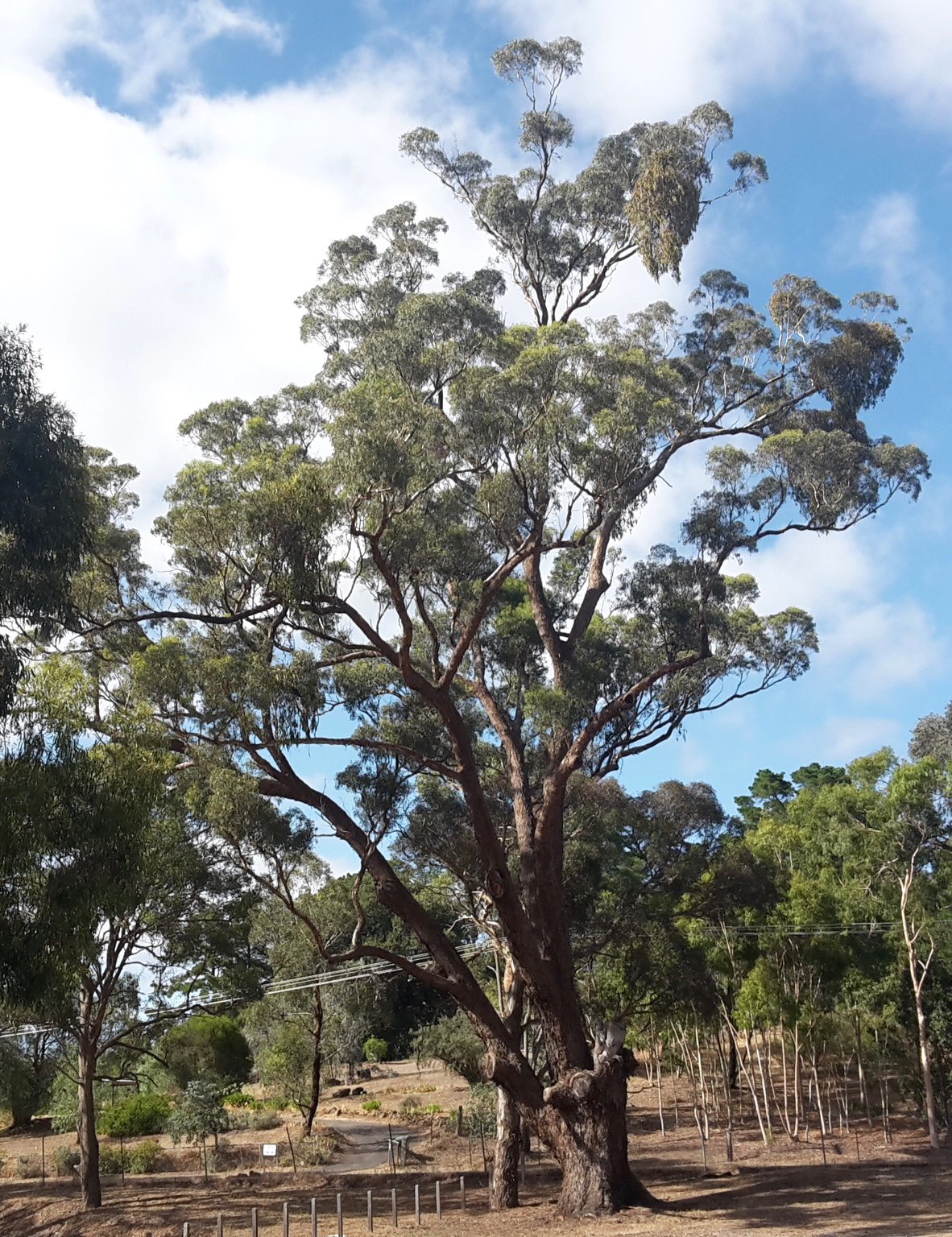
Yellow Box (Eucalyptus melliodora) at Bill Woodfull Reserve, estimated age 530 years (photo by Bev Phillips)
Online tools for accessing and sharing biodiversity information – Friday 22 March 2019
Posted on 7 March, 2019 by Ivan
Connecting Country is excited to host an interactive workshop in conjunction with the Centre for eResearch and Digital Innovation on Friday 22 of March in Castlemaine.
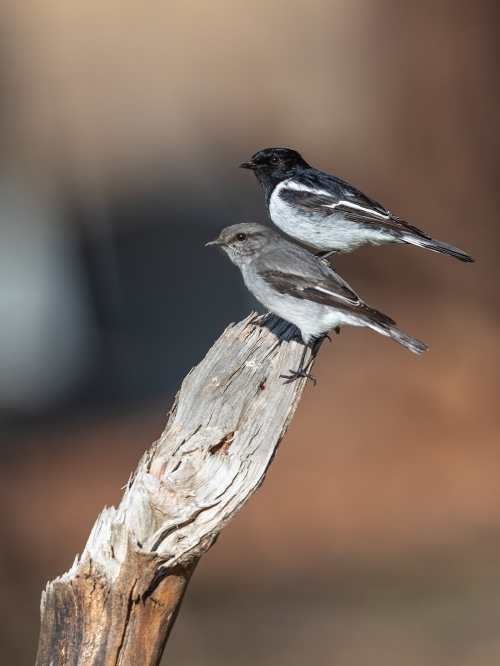
Hooded Robins are a key species for our monitoring program (photo by Geoff Park)
This interactive workshop is part of Connecting Country’s Habitat Health Check project (click here for more information), funded by the Helen Macpherson Smith Trust over the next two years. This project aims to review our long-term monitoring programs, to shift to a monitoring model that empowers our community to conduct robust biodiversity monitoring, and, importantly, to ensure that the data we collect is being shared and used appropriately.
To meet this third goal, we are working with the Centre for eResearch and Digital Innovation (CeRDI) at Federation University Australia. CeRDI has developed many award-winning web-based spatial information and knowledge portals that provide public access to data sets that are often hidden from view. The team at CeRDI have great resources that are relevant to us at Connecting Country and are well worth checking out.
The interactive workshop will cover two important databases in detail:
- State Wide Integrated Flora and Fauna Teams (SWIFFT) – a knowledge sharing network for biodiversity conservation and threatened species
- Visualising Victoria’s Biodiversity (VVB) – a web portal containing spatial information on environmental values, conservation activities and research
At the workshop we will:
- Showcase projects run by community groups and researchers
- Participate in an interactive session about sharing and accessing biodiversity data
- Explore ways to improve knowledge sharing through online platforms
- Network with other biodiversity organisations and community groups in your region
Please come and join us at the lovely Garden Room within the grounds of Buda Historic Home and Garden for this free workshop. Workshop numbers are limited, so please book.
Workshop: Online tools for accessing and sharing biodiversity information
When: Friday 22 March 2019 from 9.30 am to 2.30 pm
Where: Buda Garden Room, 42 Hunter St, Castlemaine VIC
Bookings: to book online please click here
For further details please contact Ivan Carter at Connecting Country on 03 5472 1594 or email ivan@connectingcountry.org.au
Visualising Victoria’s Biodiversity workshop
Posted on 21 February, 2019 by Tanya Loos
Connecting Country’s major monitoring project over the next two years is our Habitat Health Check (click here for more information), funded by the Helen Macpherson Smith Trust. This project aims to review our long-term monitoring programs, to shift to a monitoring model that empowers our community to conduct robust biodiversity monitoring, and, importantly, to ensure that the data we collect is being shared and used appropriately.
To meet this third goal, we will be working with Centre for eResearch and Digital Innovation (CeRDI) at Federation University Australia. CeRDI has developed many award-winning web-based spatial information and knowledge portals that provide public access to data sets that are often hidden from view. The team at CeRDI have two great resources that are relevant to us at Connecting Country and are well worth checking out.
State Wide Integrated Flora and Fauna Teams
Firstly, The State Wide Integrated Flora and Fauna Teams (SWIFFT) is a network for knowledge sharing and information exchange that supports conservation and management of threatened species, biodiversity and the natural environment across Victoria. You can explore a map displaying the range projects that are part of the network (click here), or see a list of their projects (click here). As part of Habitat Health Check we will be making sure that Connecting Country has a presence on this fantastic website.
Visualising Victoria’s Biodiversity
Secondly, CeRDI has developed the Visualising Victoria’s Biodiversity (VVB) tool (click here). VVB consolidates access to spatial environmental datasets and information – created and managed by government agencies, organisations, community groups and individuals – into a user friendly and interactive platform. You could use this platform to view, for example, records of mammals or birds near your property. CeRDI is one of many places for sharing and visualising nature data in Victoria – you can see a wonderful infographic on how these interact by clicking here.
Want to know more? We’ll be running a workshop with CeRDI (Date to be confirmed) to learn about the power of the Visualising Victoria’s Biodiversity tool.
More information to come soon – watch this space!




